#Permaculture projects
Explore tagged Tumblr posts
Text
Goats: The Ultimate Multi-Taskers

🐐 Did you know that animals play a crucial role in permaculture projects? Take the goat, for example. It fertilizes the soil with its droppings, trims and tramples the lawn to perfection, and provides us with milk for drinking and making delicious cheese. Permaculture is not just about plants; we also need livestock animals in the ecosystem on our farms to have healthy food like veggies. Natural fertilizers are better than artificial ones, which have a negative impact on human health. Check out the funny goat-themed shirts 👕 and another item at HelenGie's store on Redbubble and Teepublic, highlighting how goats are the ultimate multitaskers. 🌿💪🐐
https://www.teepublic.com/user/helengie
#permaculture design#redbubble#teepublic#helengie#classic tshirt#permaculture#gardening#organic gardening#Permaculture projects#animal role#goat milk#goat cheese#goat fertilizer#natural fertilizer#organic fertilizer equipment#lawn trimming#milk production#milk product#livestock animals#healthy food#natural feltilizers#artificial fertilizers#human health#Goat Themed Shirts#Funny Goat Shirts#Multitasking Goats#goat farm#Eco Friendly Practices
1 note
·
View note
Text
I see a lot of content here in the solarpunk community about the importance of re-wilding, of re-introducing biodiversity and turning our garden's into little sanctuaries, but this has always felt super inaccessible to me. I have always lived in rental properties that have little to no outdoor space, need to be regularly mowed for inspections, and where I am not allowed to make any major changes to the garden.


Recently I moved into a tiny granny flat. The yard is about a metre and a half of grass in a circle around the house, and a metre of grass either side of my concrete driveway. When I first got the inspection report for it, the real estate described the yard as "mostly weeds." This time I thought, fuck it. I only have inspections once every three months, which gives me plenty of time to let it grow without anyone noticing. Plus I had the insurance that with the lawn being "mostly weeds" the real estate wouldn't notice the difference. Let see if letting it grow actually makes a difference to the eco-system around me.


I invested in a push mower, to cut down the grass without doing much to the "weeds", and then after my first inspection I just let it grow. My hopes were not high. My space is absolutely tiny, and most of the wild flowers growing in my yard mostly invasive species for Australia. I had no idea if it would make any difference at all.
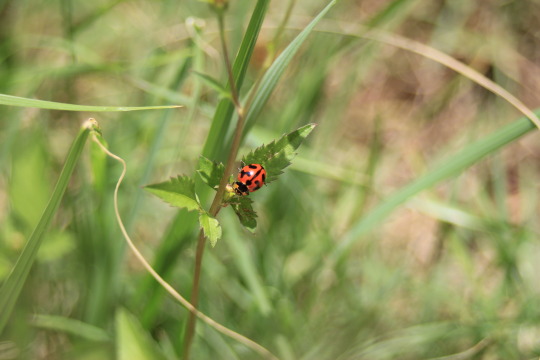
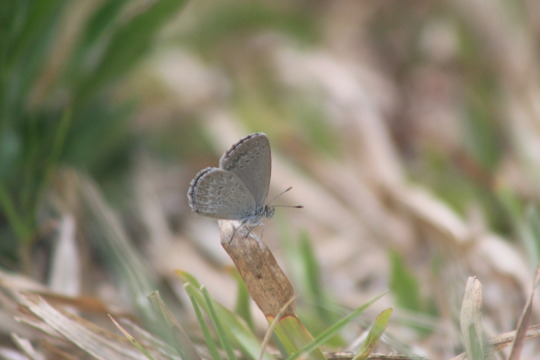
Its been an uncharacteristically rainy spring here, so the flowers all sprung up far far more quickly than I thought they would. Only two weeks after the mow there were dandelions as high as my knee. With the wildflowers came the bees, and the butterflies, and then after that came the ladybugs, the dragonflies, the lizards, spiders and birds. The photos above are only a tiny fraction of what the garden has on offer, and those are only the photos from this week.
When I first moved in, I didn't used to see anything in the well mowed lawn but ants. Its only been about a month and a half since I mowed it, but with all the rain we've had recently its sprung to life far far more quickly than I'd hoped. With such a teeny tiny lawn in the middle of the suburbs I really didn't expect to see a difference in biodiversity. How much difference can such a tiny little patch of flowers actually make? It turns out a lot.
I'll be devastated when I next have to mow it all down in another 6 weeks, but with the risk of snakes here, its probably for the best. It honestly been so lovely to walk down my driveway in the morning and be circled by all the butterflies. Its made my day every morning.
I hope I've convinced anyone else who also has a tiny space and has been considering letting it grow out to give it a go. You don't need to have a huge garden or be able to plant all native species in order to make a difference. Although these things are great, making due with what you have is the best first step.
#solarpunk#permaculture#biodiversity#gardening#rewilding#ecopunk#Also if any of you have any photos from your own garden of how your own rewilding projects are going please share with me!
370 notes
·
View notes
Text
youtube
Permaculture Instructor Andrew Millison visits the largest reforestation project in the world in the Southern Indian States of Tamil Nadu and Karnataka with the Isha Foundation, founded by Sadhguru. Andrew spent 5 days traveling around the Cauvery River watershed looking at the work of the Isha Foundations' Cauvery Calling project, touring farms, nurseries, temples, and talking with Isha's field agents. Andrew then went to Isha's ashram in Tennessee and was able to directly question Sadhguru about the project.
Check out Isha Foundation's Save Soil and its on-ground large-scale implementation Cauvery Calling represented at COP 28, Dubai
https://consciousplanet.org/en/save-s...
Isha Foundation's Cauvery Calling Project:
https://www.ishaoutreach.org/en/cauve...
Thanks to Shubo Biwas and Green Good Labs for the technical collaboration:
https://www.greengoodlabs.com/
Andrew Millison’s links:
https://www.andrewmillison.com/
https://permaculturedesign.oregonstat...
JOIN THIS CHANNEL to get access to uncut video content and live Q & A sessions:
/ @amillison
SIGN UP FOR MY FREE NEWSLETTER:
https://share.hsforms.com/1X79TznHYRC...
#Andrew Millison#solarpunk#permaculture#india#water#reforestation#Tamil Nadu#Karnataka#Isha Foundation#Sadhguru#cauvery river#Cauvery#watershed#Cauvery Calling project#ashram#Tennessee#trees#planting trees#planting#tree#drought#Youtube
41 notes
·
View notes
Text
Goal for today; transplant a dormant cherry bush*, get the scrap-fabric vest fitted to my son so I can start sewing the good fabric, and process the loin portion of the venison.
'* If you move them while they're sleeping, they often barely seem to notice the transplant. With good luck, it will wake up in the spring, look around sleepily, and start growing like crazy.
31 notes
·
View notes
Text
Booktok Girlies Losing Community & Books Aren't Political?
youtube
Soon it'll be 20 years since Stephenie Meyer first published Twilight, a book that while bringing her fame and fortune also brought her an equal measure of persecution to a degree that, to my naive eyes, was astonishing to behold. I've seen much worse since, like the ongoing "fuck JKR" tag proves every day.
And even though I've listened to what her "critics" have had to say these past maybe 15 years that I've been paying close attention, I can now tell you I am yet to hear a single pertinent criticism of her books. People who are equally practiced facing bigotry of other sorts know what bad will looks like, they know what I'm talking about.
It took me a while to finally just accept that all these defamations were coming from a place of prejudice. The same far-right individuals and organizations in America that have consistently defamed her, banned her books from libraries and burned them in public pyres have one objective: that this mistake is never allowed to happen again. Society must not celebrate or give any visibility or power to female-bodied people. Other talented young women with potential and aspirations to greatness must be repressed. They must be made to see what happens when you pursue academia followed by a paid career as a published author, so that they will say to themselves: "It's too much trouble, I'm too afraid, I should just be a stay-at-home mom and if I do write something I should keep it in a drawer somewhere". That's the agenda.
Rule No.1 of misogyny, guys: women must not be allowed to leave a legacy.

One of the hardest pills to swallow was not the dawning realization that men hate women, although that is more than I can bear. It was women's subservience to men and their habitual betrayal of their class. The audience of mostly young girls who passionately loved her books were completely silent when all the hounds came for their favourite female author, and remained silent in the following decades of hate that never abated.
Well, those girls who were teenagers or young adults back then grew up and continued to read, some of them even became authors in their own right... and now they realize that for some strange reason there appears to be an awful lot of hatred for romance and fanfiction and indeed for any kind of literature that women love.
The fascists who believe women should be seen naked and not heard are coming for the newer generation of female intellectuals and there's no one left to save them. And after decades of never standing up for their fellow women they are suddenly quite concerned that Project 2025 is going to erase their favourite books and illegalise their own writings. Oh nose.

It would be funny if in the end Stephenie Meyer, JK Rowling and other women who have been unjustly persecuted and suppressed were the ones who saved the day by using their visibility and money to fight against the on-coming Taliban-like eradication of women's freedom of speech.
But if I have learned anything at all is that any women they saved would then proceed to give all the credit to men instead, and would openly lament the place where help came from and would apologize for being rescued by the wrong lot, etc. They would never be grateful or take back any of their past unfounded accusations or finally understand who is their friend and who is their foe. That is a hopeless case.
So I'm going to take a leaf off of black women's book on this one, and I'm going to say that this is a they problem. It's not my lesson to learn. When they took men's side against women they fucked around and now they're going to find out. In the words of Parkrose Permaculture: "You have shown you will be complicit in your own oppression to gain some measure of proximity to power, some illusion that you're going to be the next Elon Muvidsk (or in this case to gain men's validation)." OK, so now go ask for help from the men who oppress you and silence you, see how that goes.

For years I used whatever voice I had on my blogs to protect women's right to express themselves and to publish books without fear of persecution, while women actively sided with misogynists against the best interests of their class, throwing under the bus even their most favourite childhood authors. I feel like they, not men, have defeated me.
Here is a small reminder of what men were already doing to books written by women well before Project 2025, as women watched with indifference and cooperated with their oppressor. I wonder if when it's their own reputation and their own legacy burning if they'll feel the same heartbreak that I felt. The same loneliness too.








#victoria smith#jk rowling#stephenie meyer#literature#movies#feminism#misogyny#Nneka M. Okona#Parkrose Permaculture#fafo#Mariana Baylis#Breakthrough Girl#gender ideology#Imani Forester#fascism#project 2025#harry potter#twilight#videos
3 notes
·
View notes
Text
#rubus#harvest#Jam#diy projects#backyard#permaculture#amazing nature#flowers#nature#blueberry#blackberry
2 notes
·
View notes
Text










3 notes
·
View notes
Text
also thinking some thots and thematically i Know trigun isn't interested in specifically exploring How gunsmoke was or is to be terraformed, i know the concerns are more about the human condition, good and evil, the most christ imagery ever seen outside of a catholic church, and the power of bros with big guns.
i know the plants are an ancillary device to make the rest of this happen, esp concerning vash, but ughhhh. i find myself so captivated by how often there's lamentation about the ecology, but almost no worldbuilding around what anyone's Doing about it. the science of making gunsmoke more livable is a background concern, meant to happen off screen. but at so many points it's sitting Right out of frame, so close i could scream - and thus. this is why darcy exists. this is her driving force in life, something she's already lost a lot over - but she can't abandon it and thus, eventually, can't abandon vash, either.
#hi so get this. your genocidal twin brother is gonna out a MAJOR dent in my permaculture projects#also not a fan of the genocide. he's gotta go#darcy#tg tag
8 notes
·
View notes
Link
#crosspost#How to render beeswax for candles#Happy Beekeeping#youtube#zapier#ivys queue#2024-02-18T03:15:31Z#bee keeping#DIY#sustainable#sustainable living#sustainable lifestyle#sustainability#green living#Beekeeping#Honeybees#DIY Projects#salt of the earth#Homesteading#BackyardGarden#SelfSufficiency#UrbanFarming#NaturalLiving#Pollinators#SaveTheBees#BeekeeperLife#Beehive#EcoFriendly#Permaculture#HomeGardening
0 notes
Text
I would start right away with a permaculture project around it:

Greening The Desert project demonstration site and education centre, located between the villages of Al Jawfa and Al Jawasreh in the Jordan River Valley.

1K notes
·
View notes
Text
Fresh Food make fresh ideas...👍🥳
1 note
·
View note
Text
I should not be allowed to garden plan for more than like 30-45min at a time because once I get past that I start going completely off the rails
#focus on this year Lia!#you don’t have to plan the next 30 years#just do this one please#garden witchcraft#cabin witchcraft#garden planning#witch life#like yes babe you’re so right you would be great at designing small scale permaculture projects for a living with no training or education#and yes babe you’re so right you could make the most incredibly perfect garden of eden style paradise with enough planning and work#no babe it’s definitely not just that you’re obviously hypomanic rn#but like#can we figure out how many tomato plants we’re doing this year BEFORE we jump into all that?#chill out
0 notes
Text
The Permaculture Spiral Garden - A Great Starting Point
There is probably no other structure as popular for illustrating Permaculture in practice as the Herb Spiral. Okay, I guess I could mention the lasagna sheetmulching method or also the cob oven that tends to be the first hands-on project at a typical Permie intro session. But when it comes to showing how landscape design, zones and sectors, stacking functions, and efficient use of space and water come together in one unique structure, the Spiral Garden is unbeatable.

Turning Theory into Practice
In typical Permaculture Designer Certificate courses, but even in brief intro weekends to Permaculture, there tends to be a lot of theoretical discussions. Since the numerous design principles can be applied to any climatic region, from the tropical to the subarctic, and on any scale from the humongous to the tiny, the practical aspects of the ideas can easily get lost. That's where a good hands-on application comes, where the participants get to move around rocks and dirt, while realizing how much it ties in to the concepts they've just discussed. This way the apparent "main purpose" of "building something to grow all your kitchen herbs on", becomes a neat side feature.
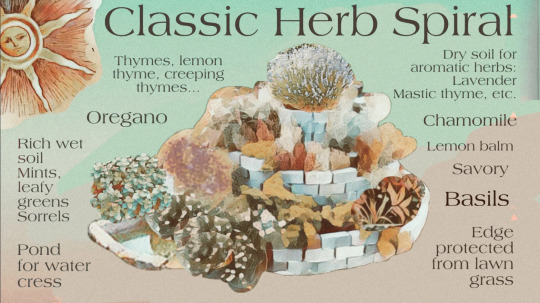
Adjust Your Landscape!
The first thing to realize that landscape is welcome to be modified and adjusted to bring out the best in it. Clearly, while it is important to work with what's there already, it doesn't hurt think about mounds and valleys. And before you bring out the excavators for your large-scale farm, it makes sense to start small… say on a circle of 2-5 meters (6-16 feet) diameter. In other words, the Spiral Garden is a hill with a spiral shaped surface, leading down to ground level, or further down into a water hole. It can be made out of rocks, bricks, concrete debris, or anything else you have lying around that can hold your soil.
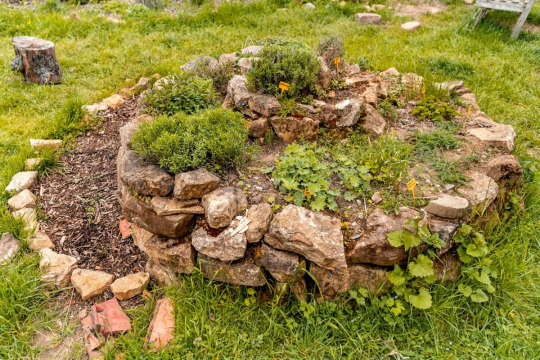
Design According to Your Scale
Looking around for existing Herb Spirals it's easy to get confused. Some are so big you can actually climb on them (that is, you have to in order to reach what's growing on top). Others are so tiny that you may not even want to step on them. The question is: which size is the right one for you? Since this is something you will have to decide almost daily in Permaculture, it doesn't hurt starting out with this important question.
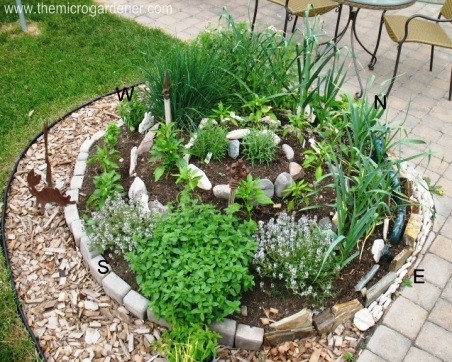
Organizing Your Spiral Garden
While there are seemingly endless types of Spiral Gardens, there are a few things they all have in common: They all start out with a region on the top, where water is bound to run off right away, leaving the soil relatively dry. This area is also the most exposed to the wind. Keep this in mind when choosing the plants that are going to live here. Ideally, the spiral should start sloping toward the East from here. Delicate plants that benefit greatly from the morning sun will appreciate this region. As the slope continues toward the South and West, it becomes more suitable for sun loving species. Finally, as the spiral reaches the ground level in the shady Northern part, it will be perfect for herbs that prefer less sun, more shade and more water, since the soil tends to be wetter here. (Note: This is for the Northern Hemisphere. In the Southern Hemisphere North and South are reversed.) To make full use of the runoff water, many people add a small pond at the base of the spiral, where additional aquatic plants, such as watercress, can be grown.
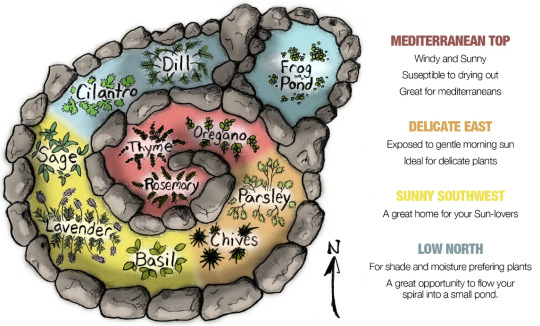
The given illustration offers a good number of herbs for a nicely diverse kitchen. Depending on what else you want in your Herb Spiral, you can add it in the most suitable region. Mint and lemon balm love the cooler, shady part with more water. Lemongrass is great in the sunny area, and tarragon and estragon prefer the dry top of the spiral. Of course, the idea is not limited to kitchen herbs. For maximalists, the same theory can work with a mountain you might want to terraform into a spiral farm. But right now I'd prefer to stay small scale.
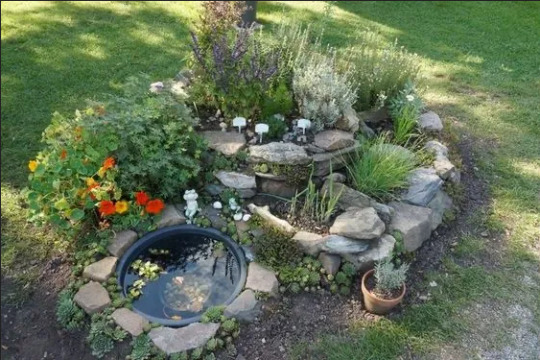
Plenty of Benefits (That's Why It's Permaculture)
As explained above, the main purpose of the Spiral Garden is not only to increase your gardening area by making use of the vertical, but also to create diverse climatic conditions, which do make a difference on the smallest scale. But as Permaculture tends to be, there are many other benefits to it. The structure itself offers great habitat for numerous animals, such as frogs, salamanders, lizards, but also pollinating insects, and of course others that may not directly benefit us, but by feeding on others they all add to the stability of our ecosystem. The structure itself will suppress weeds and make use of material that you're not likely to use elsewhere. Finally, depending on the size and location, it will be an ideal place to grow all your kitchen herbs right where you can access them most easily.
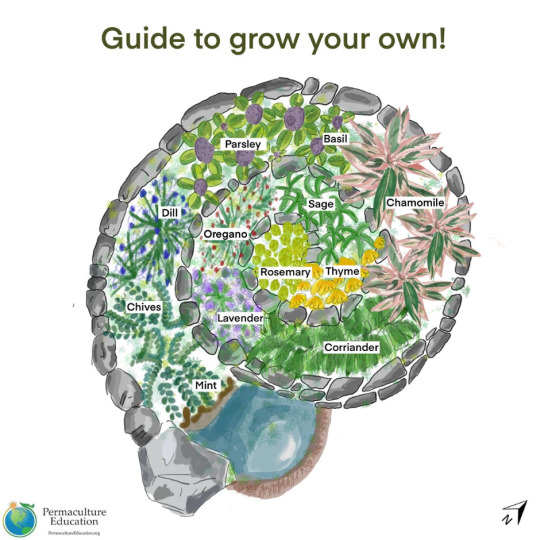
Some Things to Keep in Mind
When building the structure, make sure it will contain the soil in a nice trough, slanting slightly inward. That way bits and pieces that fall off will roll towards the center, until contained by the main mound.
Make sure the slope is always nice and gradual, avoiding sudden drops where the water can rush down quickly, eroding the soil.
If you're going to walk on your spiral, include a separate walkway that won't compress good soil. Most importantly, it should be sturdy enough to provide stability and make access safe.
Don't forget that while the structure is important to keep the soil in place, it is the soil that you'll be growing plants in. So it should have a good depth of 20-50 cm (8-20 inches) throughout the entire spiral. This can be the trickiest part!
Apply your own observation to which plants do better in which parts of the spiral. Also, with time you will find many other plants growing in it that you didn't plant. Before removing them, consider how much they actually bother your herbs, and whether their benefits may not outweigh their drawbacks.
Go Out and Build Your Own!
I hope this brief overview got you inspired to go out and try building an Herb Spiral yourself! I would love to hear your experiences with it!
Sources: 1, 2, 3, 4
3K notes
·
View notes
Video
youtube
How to turn your Neighborhood into a Village
Permaculture instructor Andrew Millison journeys to Portland, Oregon to talk with architect Mark Lakeman, founder of Communitecture Architecture and the City Repair Project. Mark initiated a movement in Portland to transform the homogenous neighborhoods of the city into places that have many of the qualities and characteristics that are found in some of the most treasured villages on Earth. Mark reveals the things you need to know to transform your own neighborhood into a village.
Previously on Solarpunks: Ideas & Inspiration For Better Cities: Sprawl Repair Retrosuburbia
#solarpunk#neighbourhood#sprawl#repair#regenerative#urbanism#portland#andrew millison#permaculture#retrosuburbia#suburbia#US#design#Sustainable Design#community
1K notes
·
View notes
Text
guerrilla gardening is very cool
I’m really stoked to talk about praxis and solarpunk today. Hopefully, you all know what solarpunk is. I imagine fewer of you know what praxis is. Essentially, praxis is a term, used a lot by leftists, to talk about doing stuff. It’s a practice or activity, informed by theoretical and experiential knowledge. In our goal to create an ecological society informed by appropriate technology, we should think not only about the massive upheavals but the things that we can do right now. That’s where guerrilla gardening comes in.
Gardening in general is activism, but guerrilla gardening is like, super solarpunk. The rundown is essentially when you and/or a group of homies take some love-starved land and turn it into a garden (or just plant stuff there) without permission from the owner of said land. That lack of permission is what makes it guerrilla. This can lead to a better community, and supports abolition (of private property), autonomy, and collective resiliency. Ideally, you can get public support behind ya, and be able to work with the municipality to not get in trouble. The classic asking for forgiveness than permission, until you’re the one that can decide.
Where to Start: X Marks the Spot
When you (and your small-but mighty collective/affinity group) decide that you want to set up a guerrilla garden, the first thing you want to do is find a good spot. It can be that little line of grass that split up two sides of the road, a sidewalk bed, or an empty lot. You want to make sure there’s good sunlight and decent soil. If the soil ain’t good, but you wanna do stuff there, I’d recommend researching how to rehabilitate it. Obviously, that’s more work, though.
Once you have your target spot, you’ll need your tools and plants. Some basic things will be gloves, a trowel, a water source (like a can or hose), and plants/seeds. Some nice-to-haves could be mulch, compost, or soil amendments. It depends on what you’re planting and what your conditions are to know what you’ll need to bring. If you’re in a high visibility area, it could be nice to have some clothing that makes sure you don’t look suspect. That’s probably a good general rule of thumb. Act like you deserve to be in the space because you do! If you look suspect, people will think as much.
Prepping the Garden
Once you have everything you need, you’ll need to get the garden site ready. If you need to clear it out, whether there’s vegetation you’re not interested in, trash, debris, etc., do that. Ideally, you can also improve the soil quality with stuff like compost and organic stuff if you need to.
Time for Plants!
Here’s where the real fun begins. Get some plants going! You want the ones you pick to be a good fit for the target climate and soil. Even better if some of them are edible. When you’re planting, be sure to space the plants out and water them pretty well. If you're planting seeds, be patient! It can take a few weeks for the plants to sprout.
Garden Tending
Now that you have a garden going, it’s time to keep it up. You want to water them regularly and watch out for any invasives or weeds that could crowd out your plants. You might also have to add additional amendments to the soil, to keep the plants happy. Try to make sure to think about and account for issues in the garden. Whether that’s nonhuman neighbors or mean vandals, you want to try to think of ways to uphold the values of the project while protecting its continued existence.
Permablitzing
I also want to touch on some more specific types of guerrilla gardening. Firstly, let’s talk about permablitzing.
Permablitizing is a portmanteau between permaculture and blitzing. Permaculture is a type of gardening and farming that aspires to copy natural ecosystems to create harmonious gardens that are self-sustaining. It generally will include a mix of native, edible, and wildlife-attracting plants. Permablitzing is taking that permaculture idea and rallying the community to create a permaculture garden in a single day.
It looks a little something like this: volunteers collectively design and install the garden. They put in garden beds, plant trees, and shrubs, and install irrigation. There might also be compost systems, raised beds, or accessible walkways through the garden. Permablitzing is great because it’s relatively quick, it’s tangible and immediately garners buy-in. It’s more about finding the space to do this and finding people who are willing to participate.
Seedbombing
If you’re not able to work with a group, or you just want to be able to very quickly deposit new plants in places, you can seedbomb!
Seedbombs are small packages of seeds wrapped in soil that can be thrown or dropped onto the ground. This kinda stuff is great for rewinding and restoring neglected or degraded areas. Just make sure you do research! You don’t wanna introduce invasive or incompatible plants.
The basic seedbomb recipe is:
Soil
Clay or compost
Seeds
You mix them together, roll them into small balls, then let them dry. You can just toss them into your target areas. Seedbombing is great because it’s fun and creative while being a great way to un-neglect neglected areas. You can also do it alone or with the homies. It’s a very flexible guerrilla option.
Final thoughts
One of the most important things to think about when trying to enact social change is aligning your ends (the liberatory future you envision) with your means (the things you do to get to that vision). Guerrilla gardening is great to this end as a form of praxis because it allows for this to be realized in the here and now. It helps us realize that we don’t have to wait until people let us do what we think is right. If you see an issue, you can respond to it. Also, gardening is fun, gets you outside, and allows you to be more connected with the earth, which is just so so so good for you. Be smart, keep each other safe, and good luck with your gardening!
#guerilla gardening#guerrilla gardening#seedbombing#permaculture#permablitzing#solarpunk#solarpunks#social ecology#social revolution
416 notes
·
View notes
Note
Hello! I live in a very small efficiency apartment where there is not a lot of wi dow space/the window is glued shut and the land is exclusively owned and maintained by the company. What can I do to incorporate more solarpunk practices into my life? Are there any plants that can still grow well indoors? I'm afraid to start up a water station or anything like that outside because I'm afraid maitenance will mess with it/remove it. Would it be better for me to do something like knitting/embroidery that I can more easily do indoors?
Hello! As a fellow apartment-dweller with not a lot of window space currently, I feel your struggle here. If you're concerned that maintenance will mess with anything you put outside, then it probably is best to focus on things you can do indoors. However, there are quite a few things you can do indoors!
Plants: If you're looking for experience growing things, there are a variety of plants that grow well indoors and with low light - here's one list. (I've heard spider plants and snake plants recommended to beginners a lot, but I've never personally grown either.)
Fiber crafts: If you're more interested in crafts like knitting and embroidery, go for it! I also recommend people who are interested in those types of things learn about mending as well - it's a great way to extend the life of your old clothes (and other things made of fabric) and reduce the amount you need to buy.
Cooking: Cooking is a great skill to have, but it can be a challenge in an efficiency apartment. If you have a cooktop or a crock pot, you can look for simple recipes that you can make with the space and tools you have.
Building community: One of the foundations of solarpunk is that it's about community. My favorite way to start, especially in apartments, is by meeting the neighbors. Introducing yourself is a great way to open a relationship. Tying in with the previous idea, if your entire building is full of efficiencies and you can cook a big batch of something in a crock pot, that's a great excuse to have some neighbors over for a home-cooked meal.
Share: Part of building community, it doesn't require any outdoor space. You and your neighbors could put together a shared pantry in your building. You could start a Free Box at your workplace. Talk to the people around you - what do they need?
Get involved: Solarpunk isn't just about growing plants and mending clothes - there's also an activism component that is how we change society as a whole. Volunteer with an organization doing things you care about. Find a local mutual aid group (here's some tips for how to find them) and see what you can do to get involved. Start your own mutual aid project. The size of your apartment is irrelevant if you're out doing things.
Research: Not being able to do things outside right now doesn't mean you can't learn about them. And many of those "big picture" ideas have a lot of concepts that can apply to the efficiency apartment life. Looking into the "7 R's" or permaculture can help you come up with ideas for more things you can do.
Also if you're really set on doing stuff outdoors, don't necessarily discount it, especially if you plan to be in this apartment for a while! You can propose outdoor projects to your apartment complex's manager. They may be more receptive than you think, especially if you can spin it to sound beneficial to them. (If you're proposing a community garden for residents, for example, it could be a draw for new residents, convince current residents to stay, be managed by you the residents so they don't have to do much to maintain it, and they won't have to pay their landscapers to mow/maintain that space anymore.)
Check out more ideas in these tags:
#apartment solarpunk
#dorms and small spaces
#community building
#activism
#fiber crafts
There's also some additional tips in this post and this post, which are earlier responses to similar asks.
I hope this helps! Followers, feel free to chime in with your best tips!
- Mod J
178 notes
·
View notes